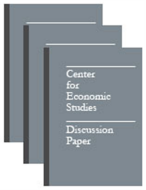
An official website of the United States government
Here’s how you know
Official websites use .gov
A .gov website belongs to an official government organization in the United States.
Secure .gov websites use HTTPS
A lock (
) or https:// means you’ve safely connected to the .gov website. Share sensitive information only on official, secure websites.
-
//
- Census.gov /
- Library /
- Census Working Papers /
- The Impact of Welfare Waivers on Female Headship Decisions
The Impact of Welfare Waivers on Female Headship Decisions
The Impact of Welfare Waivers on Female Headship Decisions
Abstract
While much of the focus of recent welfare reforms has been on moving recipients from welfare to work, many reforms were also directed at affecting decisions about living arrangements, pregnancy, marriage and cohabitation. This paper focuses on women’s decisions to become or remain unmarried mothers, that is, female heads of families. We assess the impact of welfare reform waivers on those decisions while controlling for confounding local economic and social contextual conditions. We pool the 1990, 1992, and 1993 panels of the Survey of Income and Program Participation (SIPP) which span the calendar time when many states began adopting welfare waivers. For its descriptors of local labor market conditions, the project uses skill specific measures of wages and employment opportunities for counties. We estimate models for levels of female headship and proportional hazard models for entry and exit from female headship. In the hazards, we employ stratified Cox partial likelihood methods and investigate the use of state fixed effects or state stratified hazard models to control for unmeasured state influences. Based on data through 1995, we find limited evidence that workencouraging waivers had a beneficial effect by reducing female headship of families. We find little evidence that family caps, teenage coresidence requirements or termination limits will reduce the number of single-parent families.
Others in Series
Working Paper
Working Paper
Working Paper
Share
Related Information
Some content on this site is available in several different electronic formats. Some of the files may require a plug-in or additional software to view.
 Yes
Yes
 No
NoComments or suggestions?


Top

